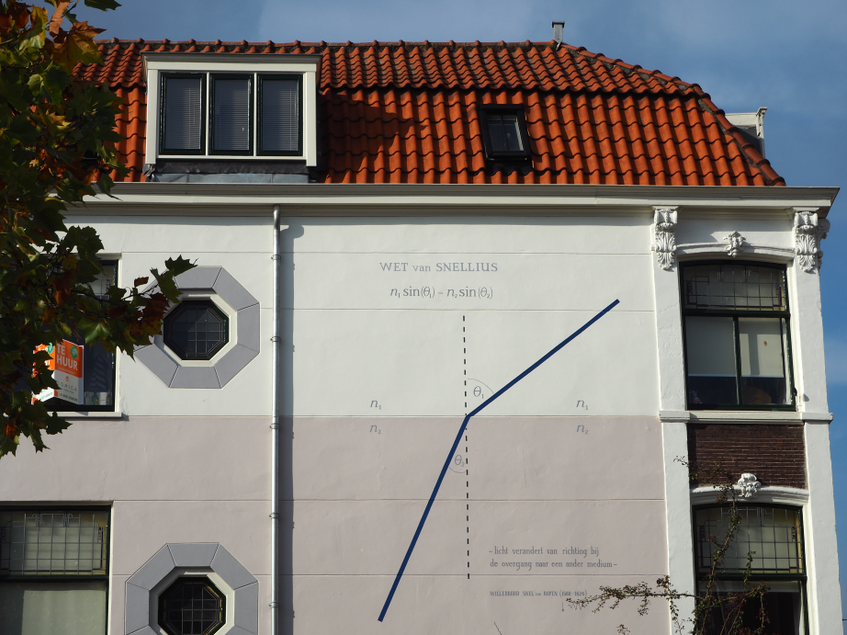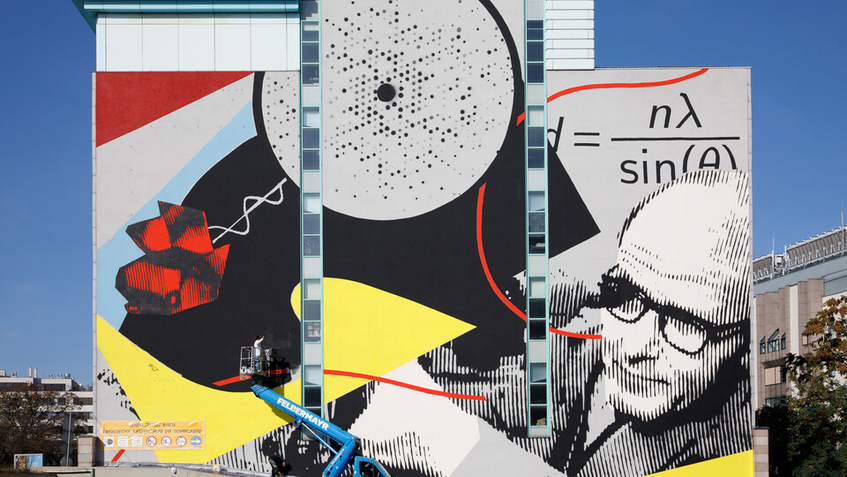Outreach
Vienna Wall Formulas
The artists Käthe Schönle and Sebastian Schager created the artwork in collaboration with the art and science project "WIENERWISSEN" and presented the Austrian-British Nobel Prize winner Max Perutz and his science on the facade of the Max Perutz Lab.
The scientific outreach project was planned by Max Perutz group leader and University of Vienna Associate Professor of Physics, Thomas Juffmann. Together with science communication expert Jacqui Hayes he is co-founder of the project ‘WIENERWISSEN’ The initiative aims to explore new ways of communicating science with the public through art. Thomas Juffmann says, "We wanted to create easily accessible science in the public forum that will appeal to both young people and those who are not closely in touch with science”. As part of WIENERWISSEN, he hopes to realize additional murals in Vienna in the near future, being convinced that science communication is more important than ever.
Max Perutz was born in Vienna in 1914 to a Jewish family, but left Austria for Cambridge in 1936. There, he began his life-long endeavor to elucidate the structure of hemoglobin, the molecule that transports oxygen in our blood. Together with John Kendrew, he was awarded the Nobel Prize in Chemistry in 1962 and is today regarded as one of the pioneers of molecular biology. The mural depicts Max Perutz's contributions to the then-nascent field of structural biology, work that led to a revolution in our understanding, not only of hemoglobin, but of thousands of other molecular machines.
Prague Wall Formulas
The beauty of physical equations can now be admired in Prague with our first wall formula painting.

The Heyrovský-Ilkovič equation (derived in 1934).
The Heyrovský-Ilkovič equation describes the polarographic wave. The height of the wave (Ilim) is a measure of concentration of a substance (in a solution) and its position on the potential axis (E1/2) is characteristic of the substance. Polarography is a highly precise method, and relatively cheap, used to determine the presence and concentration of unknown substances in solutions. It was the “queen” of analytic methods of its time. It has been widely used, for example, in industry to determine the composition of raw materials and products, in the field of medicine for the analysis of blood, and in the food industry to determine the concentration of ingredients within food stuffs. To this day, polarography and the methods derived from it are applied as purely physico-chemical methods in solving scientific problems of basic research.
Jaroslav Heyrovský (20.12.1890 - 27.3.1967)
Jaroslav Heyrovský was a Czech scientist and the first Professor of Physical Chemistry at the Charles University. It was in Prague that he discovered polarography in 1922. Heyrovský and his Japanese student Dr. Shikatou built a device that made it possible to obtain the polarography curves automatically, calling it a polarograph. In 1959 Jaroslav Heyrovský became the first Czech person to win the Nobel Prize for his discovery and invention of polarography “one of the most important methods of contemporary chemical analysis”, as said by the committee in his award speech.
Link to our press release
Leiden Wall Formulas
To commemorate Leiden's history of physical discoveries and the briliant minds that resided in the city, physicists Sense Jan van der Molen and Ivo van Vulpen collaborated with the artists of TEEGENBELD to turn ten famous formulas into illustrations and display them on selected walls in Leiden.
Within the ONEM project, we want to bring wall formulas to Prague and Vienna. Stay tuned...

Snell's Law
©muurformules.nl
